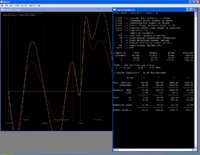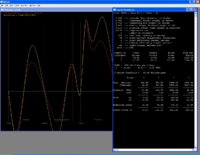hoffman900
XS650 Addict
Dot Heton,
It's a great discussion. There is nothing magical about what the engineers and gang did with these motors - this is what engine builders and engineers do. Computers allow us to quickly calculate and plot out these things.
Because it might come up, the total area for Piston CFM demand for each is as follows:
136mm rod: 30813.1cfm @ 28"
145mm rod: 30812.8cfm @ 28"
This is a for a 75mm bore x 74mm stroke @ 7200rpm.
It's a great discussion. There is nothing magical about what the engineers and gang did with these motors - this is what engine builders and engineers do. Computers allow us to quickly calculate and plot out these things.
Because it might come up, the total area for Piston CFM demand for each is as follows:
136mm rod: 30813.1cfm @ 28"
145mm rod: 30812.8cfm @ 28"
This is a for a 75mm bore x 74mm stroke @ 7200rpm.
Last edited:







 , all other parameters are the same. If you look closely at the sidewall thrust curves, you might see the 3% reduction in the long rod. The simulations also produce tabulated text reports, best viewed with Windiff. However, the reports are 107kb each, and the forum attachment limit is 20kb. Any ideas on how to post these?
, all other parameters are the same. If you look closely at the sidewall thrust curves, you might see the 3% reduction in the long rod. The simulations also produce tabulated text reports, best viewed with Windiff. However, the reports are 107kb each, and the forum attachment limit is 20kb. Any ideas on how to post these?
